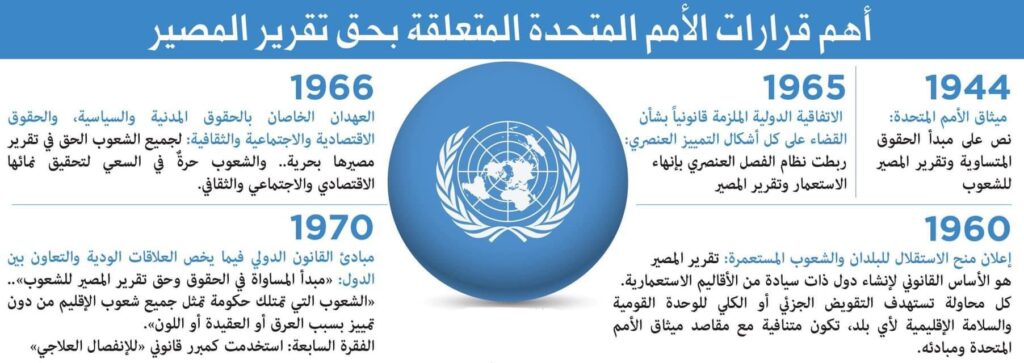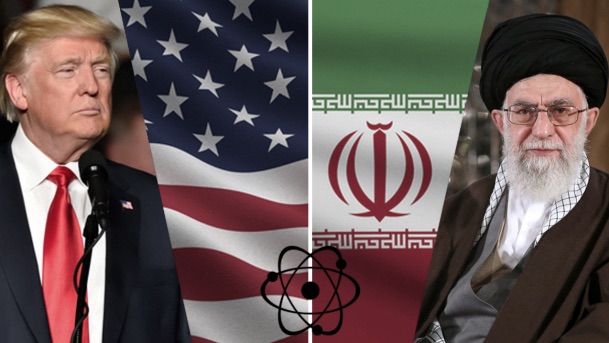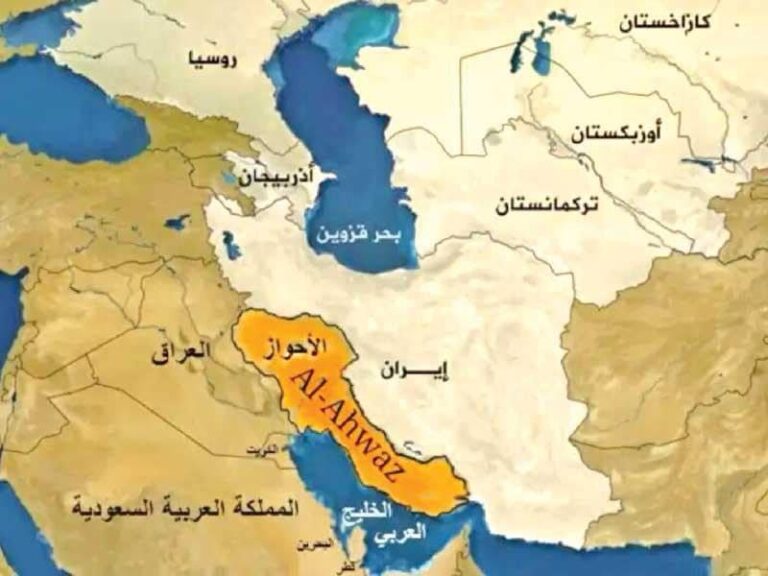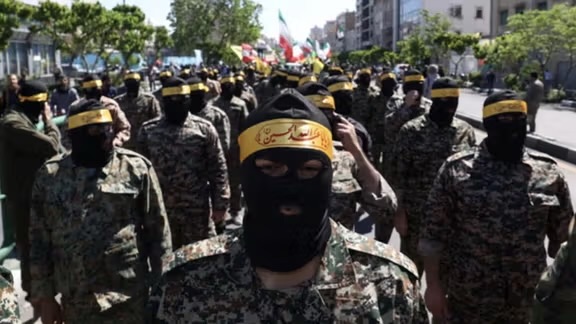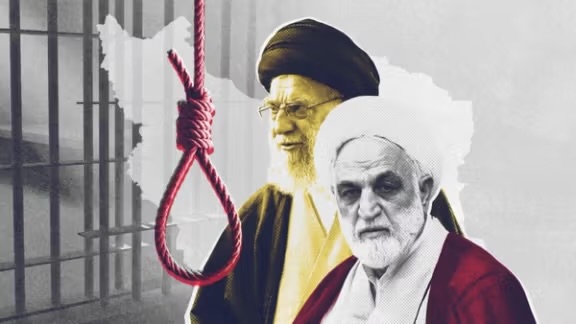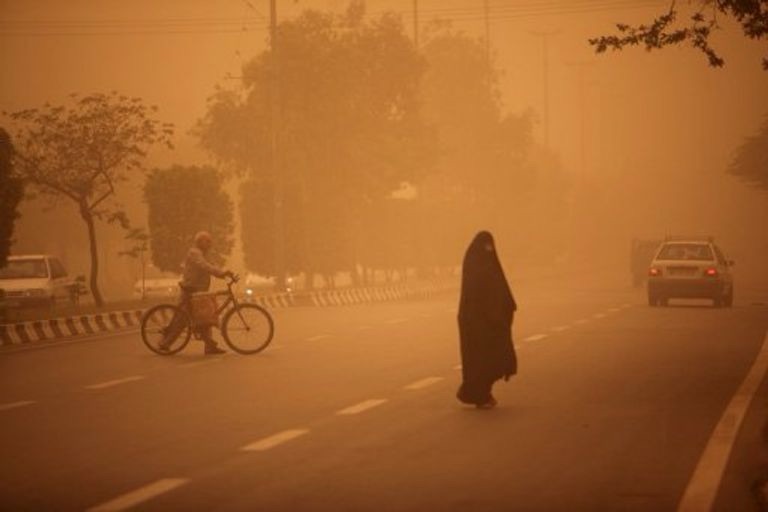1. Introduction to the Right to Self-Determination:
The right to self-determination is a fundamental principle in international law that allows people to determine their own destiny and choose their preferred form of governance freely, whether through complete independence, autonomy, or integration with another state. Article 1 (Section 2) of the United Nations Charter states that “the development of friendly relations among nations is based on respect for the principle of equal rights and self-determination of peoples.” This right is applied in cases of colonization, oppression, or ethnic and religious discrimination.
Historically, many nations and peoples have exercised the right to self-determination to achieve independence, whether through peaceful or armed means. Here, we will explore some examples of nations that gained independence peacefully and others through war, and then analyze the potential application of the right to self-determination to the Ahwazi cause.
2. Prominent Nations That Gained Independence Peacefully:
A. Ghana (1957)
• Process: Ghana gained independence from Britain through peaceful means, led by Kwame Nkrumah and the Convention People’s Party. The struggle in Ghana was more political than military, focusing on peaceful protests and calls for reform.
• Method: Negotiations and political pressure.
• Outcome: Gained independence in 1957, becoming the first sub-Saharan African nation to gain independence from a colonial power.
B. Kuwait (1961)
• Process: Kuwait gained independence through a political agreement between Sheikh Abdullah Al-Salem Al-Sabah and Britain. There was no need for armed conflict, as Britain preferred a smooth transition to independence.
• Method: Negotiations.
• Outcome: Achieved independence in 1961.
3. Prominent Nations That Gained Independence Through Wars:
A. Algeria (1962)
• Process: Algeria was a French colony from 1830. In 1954, the Algerian War of Independence began, led by the National Liberation Front, and lasted until 1962, resulting in Algerian independence after long negotiations with France.
• Method: Armed struggle lasting eight years.
• Outcome: Independence in 1962 after negotiations and agreements with France.
B. Eritrea (1993)
• Process: Eritrea fought a long war of independence against Ethiopia that began in 1961. This war continued until the fall of Mengistu Haile Mariam’s regime in Ethiopia in 1991. Subsequently, a UN-supervised referendum was held in Eritrea in 1993, in which the people voted for independence.
• Method: Armed struggle against Ethiopia, followed by a public referendum.
• Outcome: Independence in 1993.
C. South Sudan (2011)
• Process: South Sudan waged a long war against North Sudan beginning in the 1960s. A peace agreement was signed in 2005 granting the South autonomy, ultimately leading to a public referendum in 2011, where an overwhelming majority voted for independence.
• Method: Prolonged civil war, followed by negotiations and a peace agreement.
• Outcome: South Sudan gained independence in 2011.
4. Application of the Models to the Ahwazi Cause:
The Ahwazi cause concerns the pursuit of independence for Arab Ahwaz, which has been under Iranian occupation since 1925. Ahwazis have the right to self-determination based on their history and Arab identity and have faced prolonged repression by successive Iranian governments. Here, we can apply the above models to their cause, along with some lessons learned:
A. Peaceful Model:
• Ghana and Kuwait: The Ahwazis can benefit from the Ghanaian and Kuwaiti models by focusing on peaceful struggle and presenting their case in international forums, aiming to gain support from major powers and international organizations.
• Challenges: Iran is known for suppressing liberation movements with force, making it difficult to achieve independence solely through peaceful means. However, with international pressure and potential isolation, there may be an opportunity for negotiation.
B. Armed Struggle Model:
• Algeria and Eritrea: If the Ahwazis decide to follow the Algerian or Eritrean models, they may need to engage in a prolonged armed struggle, with the importance of securing regional and international support.
• Challenges: Iran has significant military power, and engaging in armed conflict would result in substantial human and material costs. Additionally, the international community currently favors peaceful solutions.
C. International Role:
• South Sudan: The Ahwazis could benefit from international support and the involvement of organizations such as the United Nations, as was the case with South Sudan, where international pressure ultimately helped achieve independence through a referendum.
• Challenges: Iran is unlikely to agree to a referendum on self-determination in Ahwaz, so Ahwazis would need strong international pressure and consensus among major powers to achieve this.
5. Conclusions and Recommendations for the Ahwazi Cause:
• A. Peaceful and Diplomatic Struggle: The most realistic option is to use peaceful and diplomatic means to garner support from the international community and human rights organizations. Ahwazis are advised to establish a government in exile or an international representative body to promote their cause in international forums.
• B. Regional Support: The Ahwazis could seek support from neighboring Arab countries that may back their right to self-determination based on their Arab identity.
• C. International Pressure: Activating international pressure on Iran regarding human rights and discrimination against minorities may help advance the Ahwazi cause. A strategy should be developed to mobilize support from the United Nations and the European Union.
• D. Collective Action: Strengthening unity among various Ahwazi factions to form a unified front is crucial for success, whether through peaceful or armed struggle.
In conclusion, Ahwaz can learn from the experiences of other nations in achieving independence by combining peaceful and diplomatic efforts with strong international support, while maintaining the right to self-determination as a legal basis.
